
Éleuthère Irénée du Pont de Nemours was a French-American chemist and industrialist who founded the gunpowder manufacturer E. I. du Pont de Nemours and Company. His descendants, the du Pont family, have been one of America's richest and most prominent families since the 19th century, with generations of influential businessmen, politicians and philanthropists. In 1807, du Pont was elected a member of the American Philosophical Society in his adopted hometown of Philadelphia.

The Hagley Museum and Library is a nonprofit educational institution in unincorporated New Castle County, Delaware, near Wilmington. Covering more than 235 acres (95 ha) along the banks of the Brandywine Creek, the museum and grounds include the first du Pont family home and garden in the United States, the powder yards, and a 19th-century machine shop. On the hillside below the mansion lies a Renaissance Revival garden, with terraces and statuary, created in the 1920s by Louise Evelina du Pont Crowninshield (1877–1958).

Brandywine Creek is a tributary of the Christina River in southeastern Pennsylvania and northern Delaware in the United States. The Lower Brandywine is 20.4 miles (32.8 km) long and is a designated Pennsylvania Scenic River with several tributary streams. The East Branch and West Branch of the creek originate within 2 miles (3 km) of each other on the slopes of Welsh Mountain in Honey Brook Township, Pennsylvania, about 20 miles (32 km) northwest of their confluence.
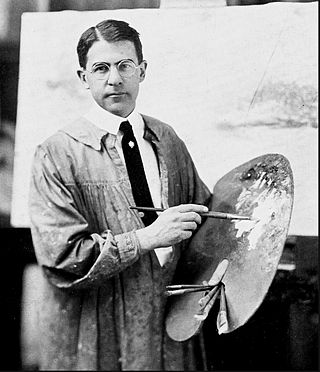
Frank Earle Schoonover was an American illustrator who worked in Wilmington, Delaware. A member of the Brandywine School, he was a contributing illustrator to magazines and did more than 5,000 paintings.
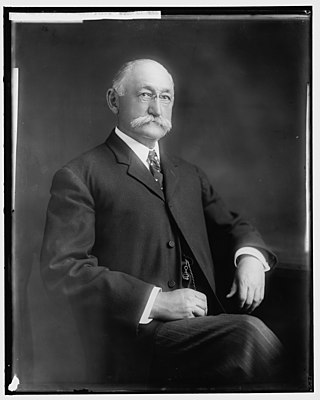
Preston Lea was an American businessman and politician from Wilmington, in New Castle County, Delaware. He was a member of the Republican Party who served as Governor of Delaware.

The Delaware Art Museum is an art museum located on the Kentmere Parkway in Wilmington, Delaware, which holds a collection of more than 12,000 objects. The museum was founded in 1912 as the Wilmington Society of the Fine Arts in honor of the artist Howard Pyle. The collection focuses on American art and illustration from the 19th to the 21st century, and on the English Pre-Raphaelite Brotherhood movement of the mid-19th century.

Brandywine Creek State Park is a state park, located 3 miles (4.8 km) north of Wilmington, Delaware along the Brandywine Creek. Open year-round, it is 933 acres (378 ha) in area and much of the park was part of a Du Pont family estate and dairy farm before becoming a state park in 1965. It contains the first two nature preserves in Delaware. These nature preserves are Tulip Tree Woods and Freshwater Marsh. Flint Woods is a satellite area of the park and has become the park's third nature preserve. Flint Woods is home to species of rare song birds and an old-growth forest. The park's forests are part of the Northeastern coastal forests ecoregion.

From 1802 to 1921, Eleutherian Mills was a gunpowder mill site used for the manufacture of explosives founded by Eleuthère Irénée du Pont, which grew into the DuPont company. The name also refers to the house on the hill above the mills, which was the first du Pont family home in America. In 1957 the site became an outdoor museum when the Hagley Museum and Library was founded. The site was declared a National Historic Landmark in 1966.
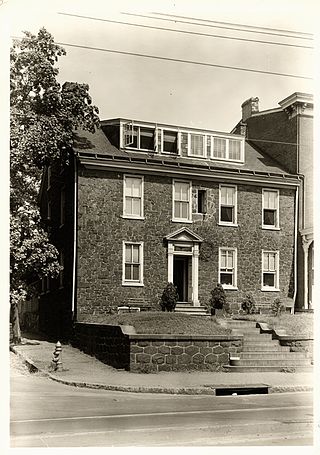
William Lea was a member of a prominent flour milling family in Wilmington, Delaware, who was largely responsible for the development of the Brandywine Mills to their place of importance.
Ban-Lon is a trademarked, multistrand, continuous-filament synthetic yarn used in the retail clothing industry. It was created in 1954 by Joseph Bancroft & Sons Company, by applying a process for crimping yarn to nylon in order to achieve greater bulk than ordinary yarns. It became popular for outerwear, swimsuits, sweaters and hose. It is frequently associated with 1950s and 1960s American clothing and culture.
Sharpley is an unincorporated community in New Castle County, Delaware, United States in the Brandywine Hundred. It is within ZIP Code Tabulation Area for 19803.

Woodbrook is a suburban community in New Castle County, Delaware.

William Young House is a historic home located near Rockland, New Castle County, Delaware. The house was added to the National Register of Historic Places in 1982.
Mahlon Betts (1795–1867) was a carpenter, railroad car builder, shipwright, businessman, banker, and legislator who helped found three of Wilmington, Delaware's major manufacturing enterprises: the Harlan and Hollingsworth Company, the Pusey and Jones Company, and the Betts Machine Company.
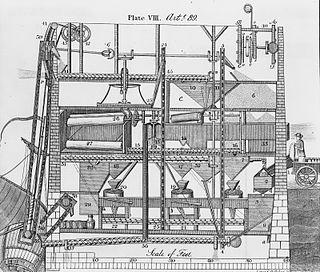
Brandywine Village was an early center of U.S. industrialization located on the Brandywine River in what is now Wilmington, Delaware.
William Poole Bancroft was an American industrialist who later became an important figure in the land conservation movement. His belief that the beauty of the Brandywine region should be protected against urban sprawl for future generations led to him purchasing large amounts of land which eventually became state and federally owned park land.
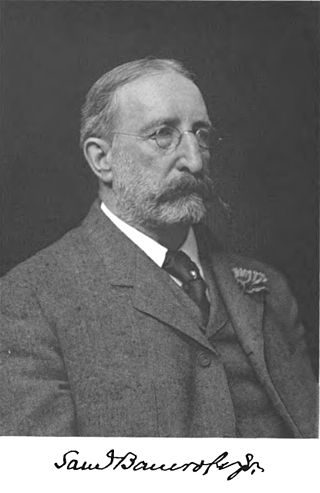
Samuel Bancroft was an American industrialist as well as a major collector of Pre-Raphaelite Brotherhood artwork. His appreciation for art and his desire to give back to the community led to his becoming a prominent philanthropist in the early 20th century, particularly of the Brandywine School.
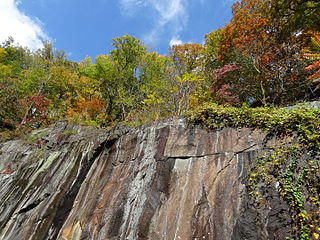
Alapocas Run State Park is a state park, located in Wilmington, Delaware, United States, along the Brandywine Creek and its Alapocas Run tributary. Open year-round, it is 415 acres (168 ha) in area. Much of the state park was created from land originally preserved by William Poole Bancroft in the early 1900s to be used as open space parkland by the city of Wilmington as it expanded. The park also includes the Blue Ball Barn, a dairy barn built by Alfred I. du Pont as part of his Nemours estate in 1914. In addition to walking trails, athletic fields, and playgrounds for children, one of the park's primary features is a rock climbing wall. The rock climbing wall is part of an old quarry across from historic Bancroft Mills on the Brandywine, and the quarry is also used for school educational programs centered on earth sciences.
Joshua Gilpin was an American paper manufacturer from Philadelphia. Along with his brother, Thomas Gilpin, Jr. and his uncle Miers Fisher, he established the first paper manufacturing business in Delaware in 1787 at the Brandywine Village. In 1804, he introduced the technique of chemically bleaching paper-stuff from England to the United States.


















